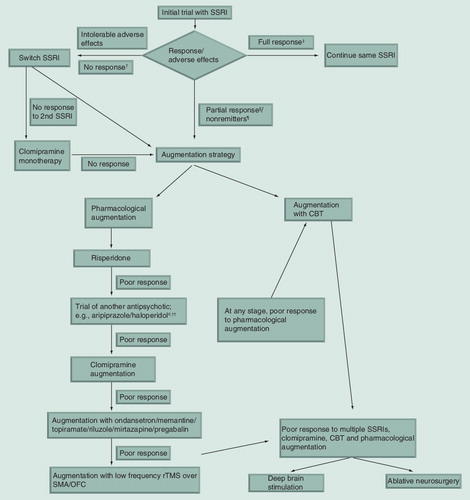Figures & data
Table 1. Randomized placebo-controlled trials of antipsychotic augmentation in treatment nonresponders/partial responders to selective serotonin reuptake inhibitors in obsessive–compulsive disorder.
Table 2. Randomized controlled trials of antipsychotic augmentation with active comparators.
Table 3. Randomized controlled trials on the augmentation efficacy of other interventions in obsessive–compulsive disorder.
Activity Evaluation: Where 1 is strongly disagree and 5 is strongly agree
